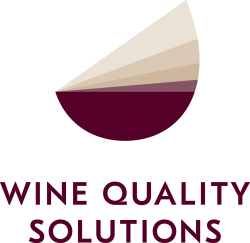
“Managing the wine shelf-life is, therefore, a challenge for the winemaker. This involves making wines with different capacities to evolve according to the conditions to which they will be exposed, and the product's intended shelf-life,” says Stéphane Vidal, Vice President of Enology & Innovation at Vinventions. A way to optimize wine shelf-life is the use of real-time analysis that enables winemakers to better manage several crucial steps affecting the shelf-life, such as bottling, by getting tangible indicators to help drive their decisions.
REAL-TIME ANALYSIS TO GET THE DESIRED WINE STYLE
Building the desired wine profile is the result of a series of steps and decisions during the winemaking process. The analysis of key parameters directly involved in the wine profile definition must help winemakers optimize their decisions. The Wine Quality Solutions range of portable analyzers have been designed to facilitate real-time measurement and monitor some of these quality parameters such as polyphenols, color and dissolved carbon dioxide. “Managing the polyphenolic content during winemaking allows modulating wine characteristics such as color, wine mouthfeel, astringency and bitterness, but also aromatic aspects like reduction or expression of ‘thiols’ aromas,” explains Christine Pascal, Enological Research Manager at Vinventions. Analyzing wine color by reflectance, based on the L*a*b* coordinates, helps, for example, better approach the targeted color for certain types of wines such as rosés that need to get a consistent pale color in some cases. Winemakers’ decisions can be improved globally by assessing the fining agent impact on color or measuring the resulting color from a blend using colorimetry. The level of dissolved carbon dioxide also plays a preponderant role in the sensory profile of a wine because its concentration can modulate astringency, freshness or sweetness feeling. The accurate and real-time analysis of its concentration is again a tangible means to help the winemaker obtain a good amount, without risk of bias in the measurement. Analyzing these different parameters, at different times of the winemaking, gives support to the winemaker in his decision making and helps him build the desired sensory profile more precisely.
BUILDING THE CAPACITY OF WINE TO RESIST OXIDATION
In addition to the sensory profile modulation, managing polyphenol quantities and their evolution (elimination of the oxidizable fraction, extraction of total polyphenols) throughout the winemaking process allows for improving the wine's ability to withstand oxidation. “With the PolyScan P200, the winemaker can measure and monitor polyphenolic content in musts and wines. During pre-fermentative phases in white, measuring polyphenols helps take the appropriate decisions during pressing or regarding the stabilization process like must oxygenation or fining, and to monitor the chosen method efficiency. During traditional red maceration, monitoring the polyphenolic extraction helps optimize the racking-off decision when the desired level of polyphenol extraction is reached. The anthocyanin/tannin ratio, which allows assessing the color stability of red wines, can also be estimated thanks to this analyzer,” explains Christine Pascal. Numerous applications are available with this analyzer that help finally get the right “polyphenolic pool” and better manage the risk of wine oxidation that will ultimately influence the wine shelf-life.
MANAGING OXYGEN DURING AND AFTER BOTTLING
Oxygen is another key parameter playing a role in wine shelf-life, particularly during critical stages such as bottling. Without any oxygen control at this stage, inappropriate pick-up can irreversibly damage the wine quality in-bottle (premature oxidation, sensory faults, etc.), even when the wine contains a high sulfites level, and generate significant bottle-to-bottle variations. Total Package Oxygen (TPO) measurement at the beginning, the middle and the end of the run allows optimizing bottling line settings to get the lowest oxygen pick-up all along the run. “Wine Quality Solutions tools and services, such as NomaSense O2 P300 and the Master of Bottling service, have been designed to help producers reach this objective,” says Stéphane Vidal.
By managing TPO, several years of shelf-life can be saved. Results from numerous audits conducted by the WQS team have shown that average TPO is around 3 mg/L. This amount of oxygen, added in a single day, corresponds to a closure inputs after 3 years if the closure permeability is 1 mg/year. “Under these conditions, the mere fact of decreasing the TPO by 1 mg would allow saving an additional year of shelf-life,” explains Stéphane Vidal. By combining these technical solutions with Vinventions closure solutions, the winemaker can also optimize the wine preservation by the choice of suitable closures. Indeed, wine oxygen exposure after bottling can be modulated per the closure oxygen ingress. By selecting and adapting closure oxygen ingress to its wines, a winemaker can positively control the wine evolution, its shelf-life and the sensory profile offered to the consumer when opening the bottle.
Visit us on Viniconnect and click here >>
For more information, please contact us